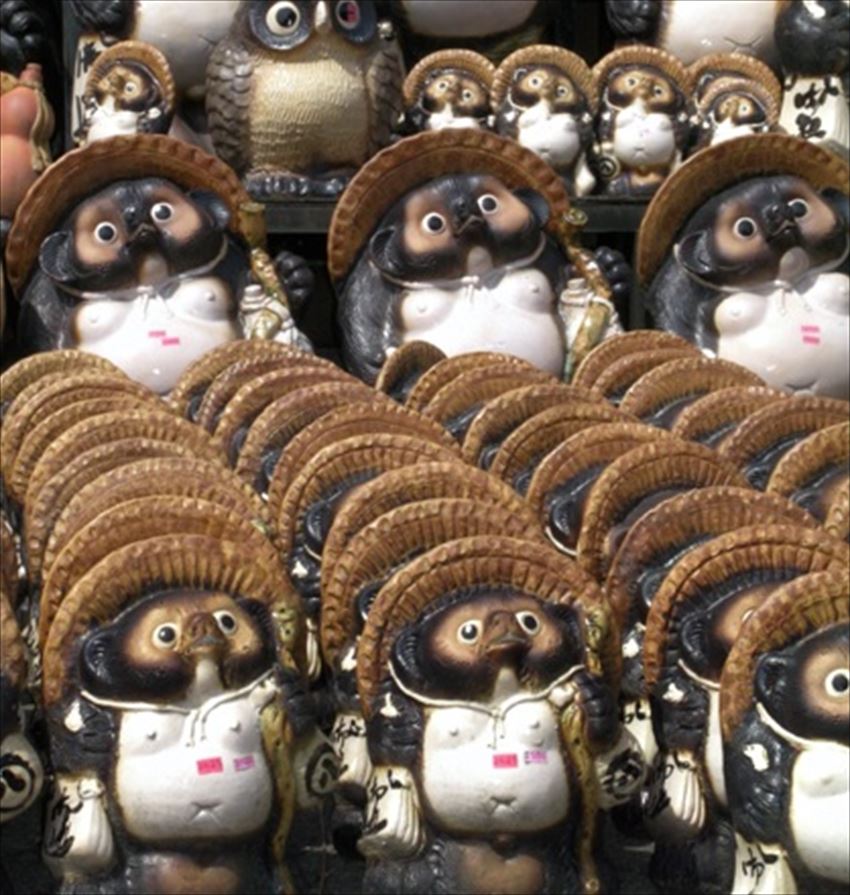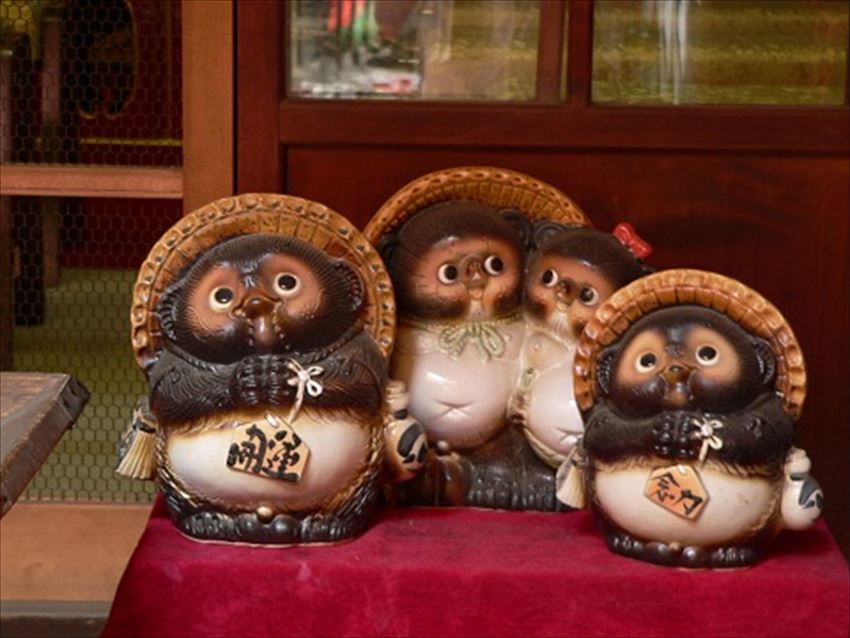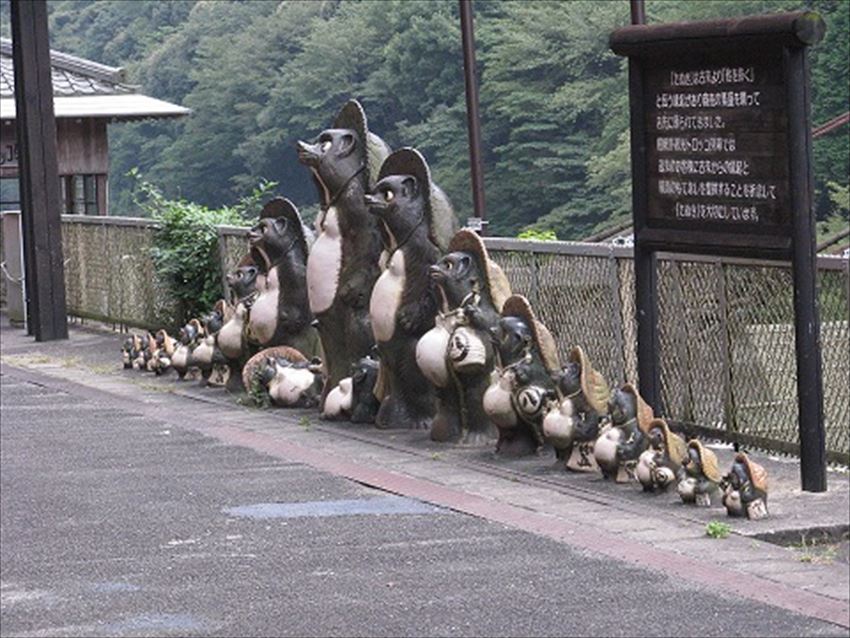Shigaraki

You can see ceramic tanuki (Japanese raccoon dog) figurines in front of restaurants and shops throughout Japan. These ceramic figurines are called Shigaraki ware, which is a brand of ceramics that has been around since long ago in Japan. While the history of Shigaraki ware is very old, tanuki figurines were first made approximately 100 years ago. It has been said that the potter Tetsuzo Fujiwara was the first person to make a Shigaraki ware tanuki figurine. Apparently, he started making them just for fun. Tanuki figurines are said to feature eight aspects that represent good fortune.
Features that represent good luck
While there are various theories on the details, the eight features that represent good luck are the conical straw hat (protecting the body from disaster falling), the face (good humor), big eyes (looking carefully at and paying attention to one’s surroundings to make good judgments and care), a big stomach (having both calmness and boldness), a sake bottle (having virtue), a passbook (having trust), scrotal sacks (having luck with money), and a fat tail (things ending well).

Popular in nationwide

The charming appearance of these Shigaraki ware tanuki has become more and more popular.
The reason the figurines spread nationwide all at once goes back to 1951 when the Emperor Showa visiting Shigaraki and was so moved by the site of tanuki figurines holding small Japanese flags lining the road that he wrote a poem about it.
The newspapers reported how impressed Emperor Showa was, and tanuki figurines subsequently spread throughout Japan.
Tanuki

It has also been said that Shigaraki ware tanuki became popular among restaurants and shops because the word “tanuki” can mean “excel past the competition” in Japanese depending on the characters used.
Thinking about this really makes me want a tanuki figurine!

Comments